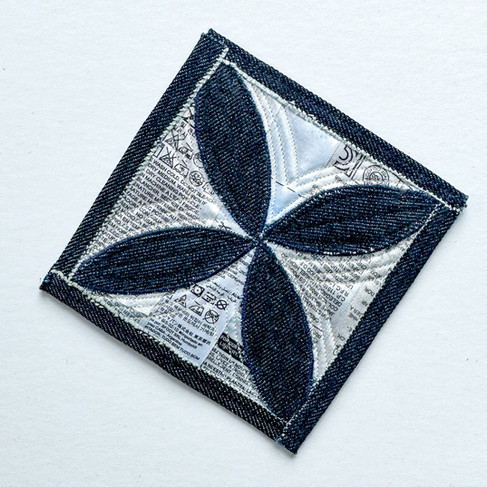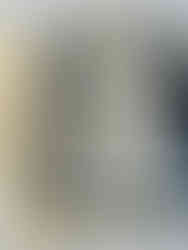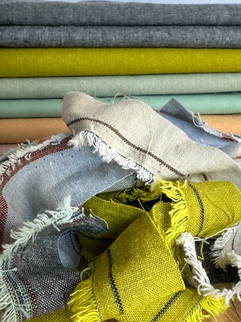Upcycled Greeting Cards: Turn Fabric Scraps into Handmade Gifts
- Radha
- Sep 6
- 4 min read

Looking for a fun way to use up the tiniest scraps of fabric? Upcycled greeting cards are one of my favorite little scrap-busting projects. They’re quick, satisfying, and let you experiment with design on a small scale. Plus, they keep fabric out of the landfill and give new life to old materials.
I'm going to show you some examples with denim scraps and with decorative fabric selvedges, but you can really make these out of any textiles.
Choose Your Own Adventure:
There are so many different options and techniques to choose from, I'm going to talk about the ones below that I've grouped by whether they are:
Direct-to-card: stitch scraps straight onto cardstock
Mini quilt top: sew scraps into a panel, then attach to cardstock
Materials/Techniques
DIRECT TO CARD | MINI QUILT TOP |
Denim Scraps
| Denim Scraps
Fabric Selvedge
|
Finishing your Upcycled Card
You have the option to sew by machine, sew by hand, or do a combination of the two. I sew the scraps to cardstock using my sewing machine and then will occasionally add decorative hand stitching.
Supplies
Fabric scraps: denim, selvedge strips, or any mix
Scissors or rotary cutter for cutting scraps
Lightweight Cardstock sheets or blank greeting cards (upcycle old ones if you have them. Those Christmas cards from 2010 totally count!)
Ruler and blade for cutting cardstock
Batting scraps (only if making mini quilt tops)
Glue (Elmer's glue stick is my favorite)
Clips
Sharp machine sewing needle:
Size 70-80 (thinner is better since you will be putting holes in your cardstock.)
Thread: quilting thread, embroidery floss, Sashiko thread, or whatever you have
Sewing machine (optional, you can also hand sew)
A walking foot on your machine is optional but helps denim feed evenly.
Tips:
Skip the pins, they’ll damage the paper. Clips or glue are your friends.
Apply the glue lightly so it doesn't warp the cardstock. Let the glue dry 1-2 hours before sewing on your machine.
Use a long stitch length to attach the fabric to the cardstock (3–3.5). Too short and you’ll perforate your card like a tear-off coupon.
Don’t forget the “other” parts of jeans:
Labels can be sewn into designs for a graphic, textural detail.
Pocket bags sometimes make perfect backings or light fabric accents.
Jeans thread (harvested from old seams) can be reused for attaching or decorating.
Fabric Selvedge 101
Fabric selvedge is the tightly woven edge that runs along the lengthwise grain (warp) of fabric. It’s formed by the weft threads looping back at each edge, which locks everything in place. Translation: no fraying, and lots of design potential.

Do you secretly want to become a textile nerd?? Check you these posts on denim:
Direct to Card Techniques
1. Patchwork Technique
This has been such a frequent request, I've made a whole video tutorial and guide. Use the link below to get it emailed to you (it's free!).
2. Weaving Technique
Cut your scraps into strips (mine are usually 1/2" to 1" wide). Different washes of denim make the pattern pop.
Glue one edge of the strips to the cardstock in a line.
Weave more strips over-under like a basket.
Use glue or clips to secure the remaining edges to the cardstock.
Stitch around the edges to secure the weave to cardstock.
Cover the edges or leave raw.
3. Abstract Design
Place denim scraps directly onto your cardstock in overlapping shapes or organic layers. The frayed edges add character, so don’t feel like you have to tuck them under.
Glue the scraps down as you go.
Stitch scraps to cardstock by machine or hand.
Add decorative hand stitching if desired.
Mini Quilt Tops
You can add any mini quilt top to cardstock to create upcycled art. It's a similar process to the "direct to card" techniques above, you just sew all your fabric together first and then attach it to the cardstock.
This is also an opportunity to add a layer of batting between the fabric and the cardstock to give it more dimension and make it look even more like a quilt. You can follow the process below with any type of design -- something abstract, a traditional quilt pattern, or strips of selvedge.
Process for adding Mini Quilt Tops and batting
Piece scraps into a little quilt top.
Add batting between the fabric and the cardstock for more dimension.
Fold edges under for a cleaner look or leave them raw.
Use glue or clips to secure the fabric to the cardstock.
Stitch fabric and batting to cardstock in your desired pattern.
Fabric Selvedge Card Ideas
I have a separate post on layered selvedge cards that you can check out here:
Why You’ll Love This Project
Keeps scraps out of the landfill
Lets you play with design in miniature — low pressure, fast results
Works equally well with heavy denim and lightweight selvedges
Every card is a one-of-a-kind, giftable piece of art
Every card turns out different, which is half the joy. Whether you’re patchworking denim, weaving strips, or layering selvedge, you’re making tiny works of art from what would otherwise end up in the scrap bin.
If you try this, tag me on Instagram or TikTok — I’d love to see what you come up with!
Happy scrap-busting,
Radha
































































